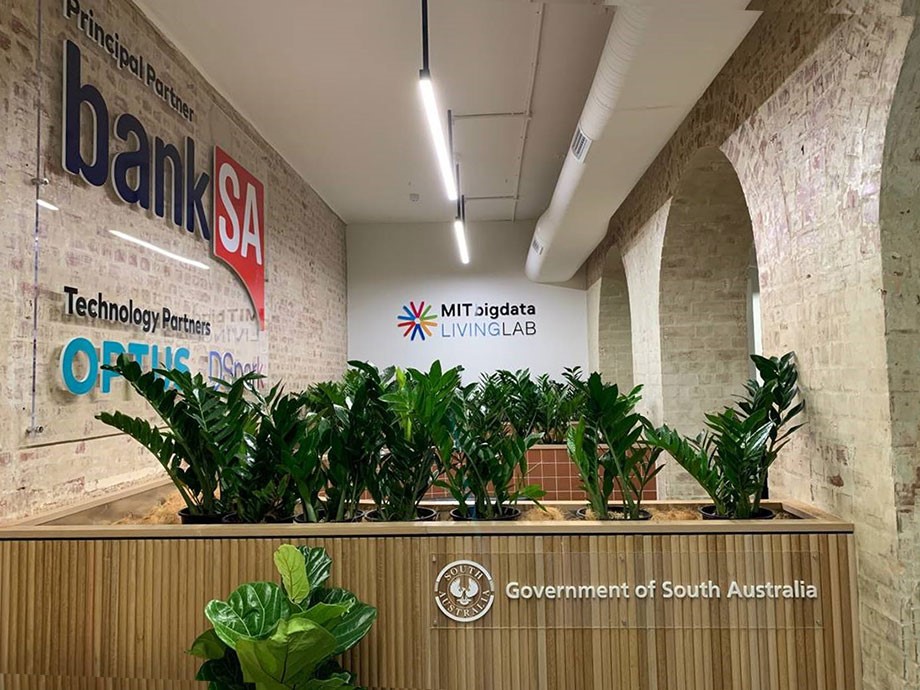LOT FOURTEEN
A WHOLE LOT OF TALENT
Some of the brightest minds are collecting at South Australia’s exciting new innovation precinct in the heart of Adelaide’s CBD
William Abbott
DTEX Systems graduate counter insider-threat intelligence engineer
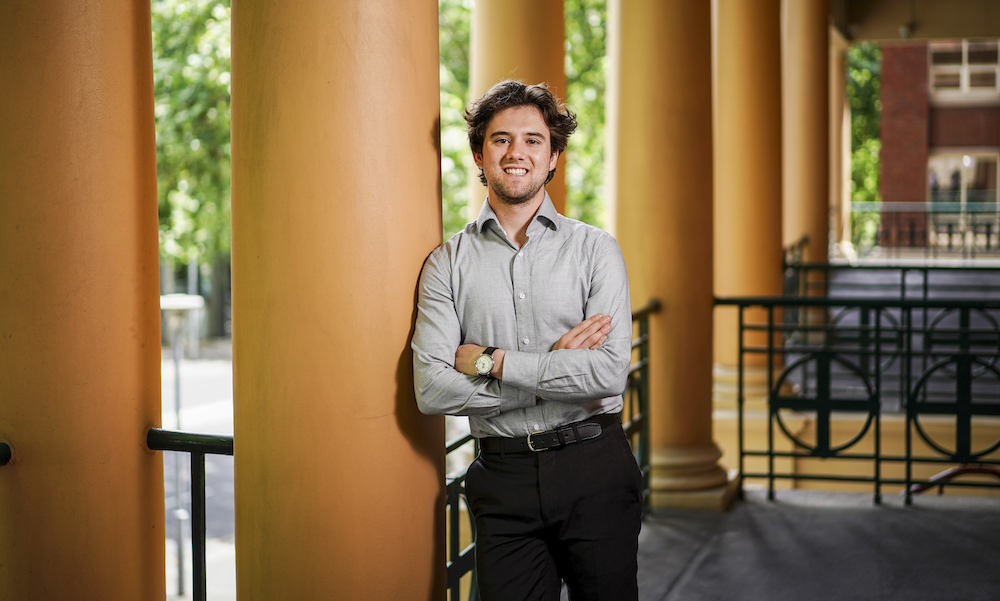
After a year of working at DTEX Systems in the heart of Adelaide’s Lot Fourteen innovation precinct, young mathematician and bright spark William Abbott, 21, is in his element. He found his full-time role with DTEX after taking up an internship with the cyber intelligence company in his final year of advanced mathematical sciences at The University of Adelaide.
“I always thought I was OK at maths, which helps,” Abbott says. “When I got to university, I decided to just do what I liked and hopefully follow my passion and see where it ended. Cyber security was probably one of the last places I thought I would go.”
At DTEX he found many ways to apply the mathematical theory he had learned to real-world problems, helping customers detect insider cyber security threats and manage large company computer networks through behaviour profiling.
“The team I’m working with is so open to questions,” he says. “I ask a lot of questions and they are always able to answer or point me to someone who can. If I bring something I think will work – an idea – they give me actual feedback to improve it.”
At Lot Fourteen, Abbott can bounce his ideas off other bright minds working across the precinct. “It’s a good ecosystem of sharing where, if we have lunch, we can sit down and talk and be open about ideas. It fosters a lot of creativity,” he says. Meanwhile’ he is just focused on bringing his best ideas to the company and “giving back as much as my skills can allow”.
Alex Priest
Inovor Technologies aerospace engineer
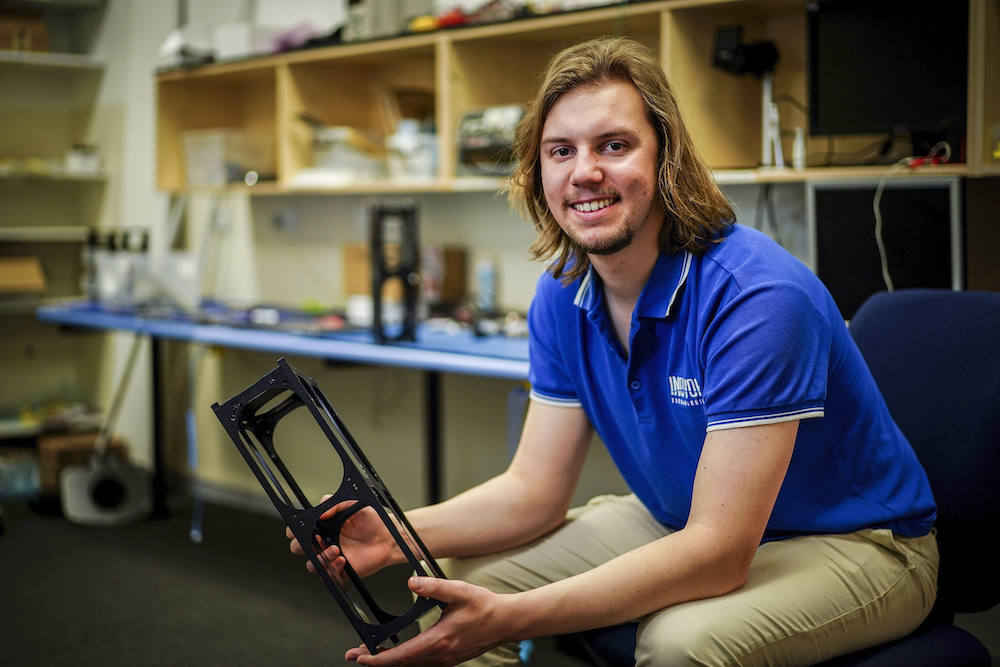
Alex Priest believed he would have to leave South Australia, and even Australia, to find a career in aerospace engineering. “I didn’t think it was going to be a possibility but now it very much is, it’s pretty awesome,” he says. Priest, 25, began working for space technology company Inovor Technologies, based at Lot Fourteen, about two and a half years ago, after impressing CEO Dr Matthew Tetlow during an honours project at The University of Adelaide.
“As a kid I was always interested in science fiction (and) space-related things,” he says. “At school, aerospace engineering was one of the things I saw I could do. I picked that quite early and just stuck with it.”
At Inovor, he gets to do mechanical designs for satellites, mission design and systems engineering. He is also doing work that began with his honours project, using simple ground-based cameras to monitor large satellites in very distant orbits, 36,000km above the Earth.
“When I first started, there were only about 10 people working here – they mentored me and helped me a lot,” Priest says. “But, over the last year and a half, we’ve really expanded and we are up to 40 people now.”
Lot Fourteen is proving a perfect environment for his work. “We get to interact and work on different projects with people – we’ve been working with Neumann Space, who are next door to us, and there’s Myriota,” he adds. “Having more people with differing experiences to work off, all in the same space together, is quite unique and exciting.”
Madison O’Brien
Teamgage customer success analyst
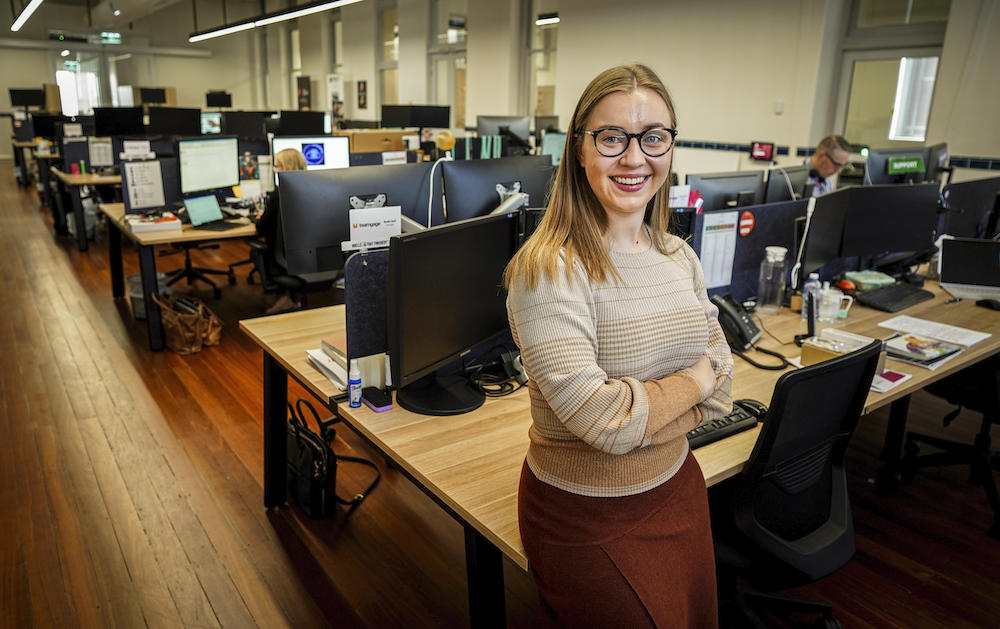
After four months with work culture specialists Teamgage, Madison O’Brien, 22, is convinced the Stone & Chalk start-up hub environment at Lot Fourteen is the right place for her.
“Start-ups are a dynamic, fast-evolving environment in which to work,” she says of the Lot Fourteen-based business powered by FIXE, the Future Industries eXchange for Entrepreneurship. “If there’s someone who wants to grow professionally, working in a start-up is absolutely the place for you.”
O’Brien, who studied a Bachelor of Business specialising in HR management at Flinders University, is an analyst who helps assemble feedback from customers’ employees. “I get to help thousands of employees make sure their voices are heard about how they are feeling, particularly as a result of COVID-19,” she says.
By applying artificial intelligence programs to the feedback, O’Brien can present insights learned and key strategies to help clients improve their organisations.
O’Brien, who is also studying for a Graduate Diploma in Psychology, focused on HR after discovering that people, on average, spend 90,000 hours at work during their lifetime: “That’s a lot of time,” she says.
“Part of choosing HR was to have an influence on that, to make a difference to the way people experience work – wanting people to wake up and jump out of bed because they enjoy going to work.”
She finds Lot Fourteen an inspiring place to work. “It is, at its core, a community of like-minded individuals, people who want to see a change in the world,” she says. “We chose … to do something we believe in. It’s great because people here are the most talented in their fields.”
LOT FOURTEEN
HI-TECH PRECINCT REACHING HEIGHTS OF SUCCESS
More and more tenants are taking up residency at Adelaide's Lot Fourteen
Lot Fourteen – hi-tech innovation precinct and home to the space industry in South Australia – is bursting at the seams with new tenants and undertakings as the final pieces of infrastructure for the project begin falling into place. The precinct, on the former Royal Adelaide Hospital site at the corner of North Terrace and Frome Road, is already the base for 869 knowledge workers, with that number expected to reach 6000 when physical redevelopment finishes in 2028. It is home to SmartSat Cooperative Research Centre, the Australian Space Agency, the Australian Institute for Machine Learning, and the Defence and Space Landing Pad, with a total of 37 established companies and organisations. And 44 start-ups are hosted at the Stone & Chalk hub, which is powered by the Future Industries eXchange for Entrepreneurship.
Work has been completed on the refurbishment of four heritage buildings on site plus the Sheridan Kiosk, already serving coffee and food to hungry workers. Work on the final heritage property, the Bice Building, is underway with strong interest from new tenants.
All of this means the precinct is becoming an ever-increasing magnet for new businesses and investment, creating hi-tech and related jobs for workers now and into the future. About 29 per cent of businesses on site are involved in the artificial intelligence and machine learning sector, while 24 per cent are in space and defence.
“It’s been pretty exciting: there just doesn’t seem to have been any stalling in the momentum that’s been built up at Lot Fourteen,” Di Dixon, state project lead Lot Fourteen, says. “We’ve seen an ongoing interest (and) companies starting up there are now looking at scaling up and potentially moving to other areas. It’s also the attraction of new businesses, creating high-value career opportunities and jobs in sectors in which SA has a global reputation and strengths.”
The focus is on hi-tech industries including cyber security, defence, space, and creative industries. Recently, Leonardo, a global top-10 player in aerospace, defence and security, moved to Lot Fourteen to work with SmartSat CRC and join the space ecosystem around the Australian Space Agency. “Because we have this base of research, intellect and sector strengths, other international companies are coming in,” Dixon says. “Leonardo is looking at how they can use that local expertise to develop new and competitive business opportunities.
“There is also LGM, a French engineering company which has come to the Landing Pad. They created five positions over the last year and are looking to build up to 20 to 25 around SA in the next three-to-five years. Companies can see the value proposition for themselves and it’s just going from strength to strength.”
AIML already has 120 researchers on-board, half of them PhD students at The University of Adelaide. One of the large infrastructure projects on site – the Entrepreneur and Innovation Centre – will become the centrepiece of the precinct. The 16-storey building will be a centre for fostering the next generation of businesses and jobs, all focused on defence, space and technology, and construction will start in the second quarter of 2021.
The ground and first floor of the building will be developed as an Innovation Hub to facilitate further investment and co-operation between companies, universities and researchers. It will offer event and meeting spaces, flexible workspaces, and shared and dedicated laboratories and is supported by up to $20 million from the Australian Government through the Adelaide City Deal. “We see that as the place everyone across Lot Fourteen will come to for events, to hang out and where that organic collaboration will happen with the mixing of disciplines,” Dixon says. “It will have high levels of security and future proofing so it’s attractive to global partners.”
The Lot Fourteen portion of the Adelaide City Deal, supported by the State and Federal Governments, totals $551 million and it will also support the Aboriginal Art and Cultures Centre and the International Centre for Food Hospitality and Tourism Studies to be built at the precinct. The former is being developed in partnership with Aboriginal people to tell the stories of the world’s oldest living cultures using the latest technologies. “We are looking at work potentially starting on site later next year and for an opening in 2025,” Dixon says.
The new cafe is already the place to get a morning coffee, healthy lunch or a drink after work with friends at Lot Fourteen. Led by manager Brett Hicks-Maitland and executive chef Sam Worrall-Thompson, the watering hole is part of the North Terrace interface, inviting the public to visit and take part in what is happening at the precinct.
Anyone can walk through the precinct and the public will be encouraged to visit Lot Fourteen attractions, including the Australian Space Discovery Centre, when it opens in the first half of next year. “We are also proposing to create a large central park, which will be available to the public and members of the Lot Fourteen precinct, offering open lawns, shady trees, playing areas for social sports, and water features, plus a central plaza to link the EIC to the heritage buildings and create a meeting place and venue for small events,” Dixon says.
So, the work continues as the Lot Fourteen team looks to the present and the long term, ensuring a pipeline of new companies, investment and job creation for coming decades.
BIG DATA
BIG DATA CREATES BIG RESULTS
MIT’s big data laboratory at Lot Fourteen is closer than ever to yielding results that will help grow the state’s economy
The Massachusetts Institute of Technology (MIT) big data Living Lab, based at Lot Fourteen in Adelaide, is just a few months away from its goal of using data generated from the everyday lives of South Australians and visitors to SA to help grow the state’s economy. The process is a clever collaboration between MIT, principal partner BankSA, Optus, DSpark and the State Government. “MIT is a fantastic partner to work with as they are a leading university in the world, a global leader in data science,” Nick Reade, chief executive of BankSA, says.
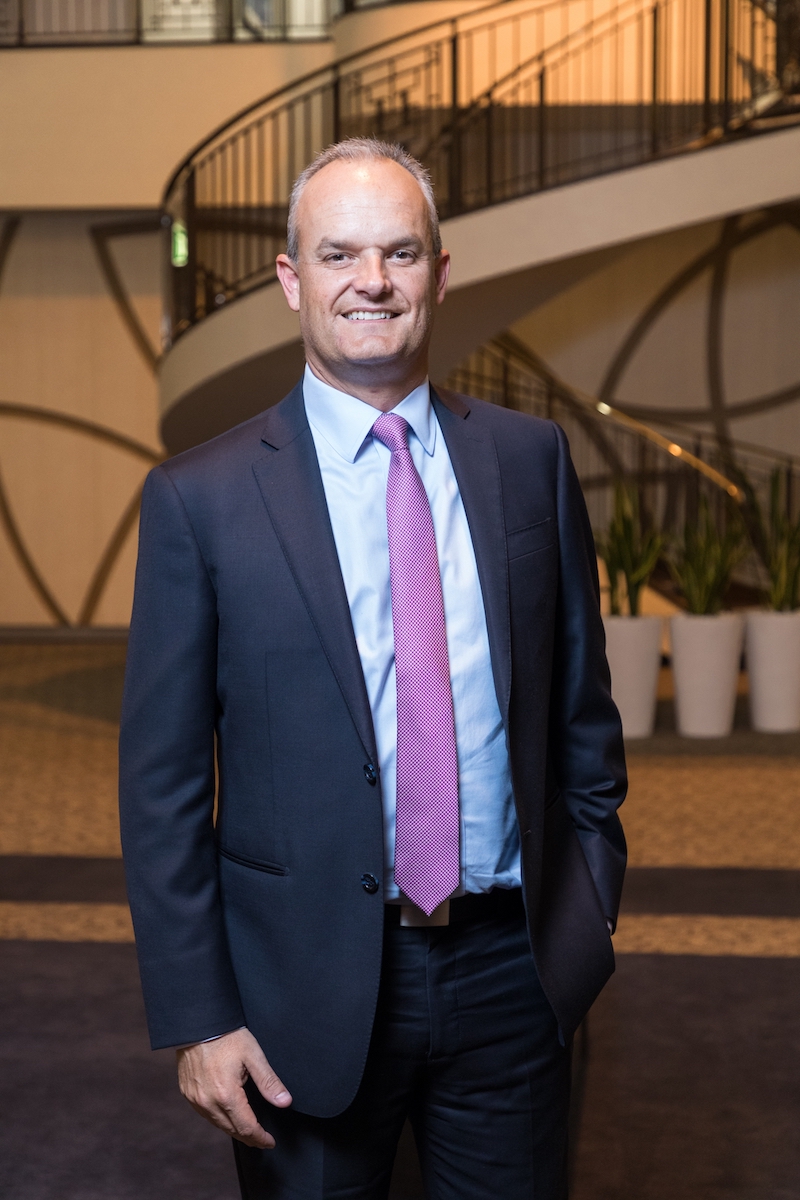 With several MIT labs already operating around the world, Adelaide has not had to reinvent the wheel but can immediately take advantage of the powerful data tools MIT has produced elsewhere. The corporate partners in the project are providing their own expertise, as well as bank and telco customer data, all carefully washed of individuals’ personal details. Similar data from the State Government has been added to the mix. “We’ve got aggregated data, there’s no personalised information, no individual data,” Reade says.
With several MIT labs already operating around the world, Adelaide has not had to reinvent the wheel but can immediately take advantage of the powerful data tools MIT has produced elsewhere. The corporate partners in the project are providing their own expertise, as well as bank and telco customer data, all carefully washed of individuals’ personal details. Similar data from the State Government has been added to the mix. “We’ve got aggregated data, there’s no personalised information, no individual data,” Reade says.
The amassed information is nonetheless very rich and is revealing useful trends and themes through several concurrent projects the lab has on the go. The group is using the data to burrow down into the true economic value of boosting mobility through transport networks. “MIT has done an enormous amount of work around the world looking at what is the benefit of getting people mobile,” Reade says. “We are looking at what’s the economic benefit of doing that, in a state growth sense.
“We typically go, there’s a social benefit of public transport, the jobs benefit of building that road, but we don’t usually articulate what happens if we get Mr and Mrs Smith from Port Adelaide from A to B – does that create other economic value, does it create jobs?”
An outcome of this deeper investigation might be using the information to help franchisees make better decisions about the best location to open their next business. Using data from interstate visitors may also lead to lengthening tourists’ visits to SA, delivering a very direct economic benefit. “People might be coming to SA for the Fringe, we can see it from plane rides booked and tickets reserved,” Reade says. “We can go, ‘What can we do to capture this opportunity, market ourselves differently, provide more incentives for a side trip?’.
“We have a number of projects we are working on and we are quite excited by the potential. We are pretty close to having more ideas than we have the capacity to do, but that’s a good problem to have. There’s lots of interest.
“We’ve got a job to land these things and get them out into the right hands. We are trying to add value.”
